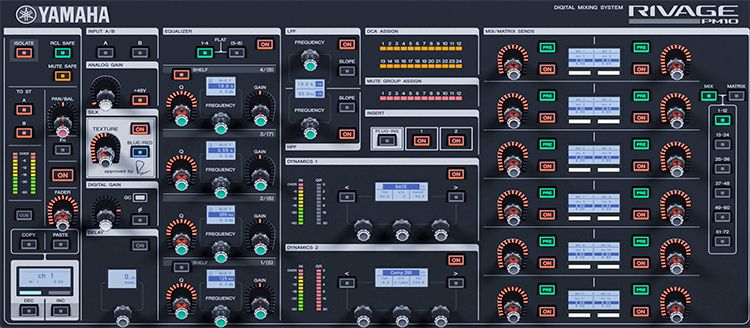THE TWO CHANGES IN LIVE MIXING WORKFLOW.

Compared with 10 years ago, many innovations changed the way we use mixing systems. For example: increased DSP power and i/o infrastructure removed virtually all of the constraints we had got used to in the past, making the workflow processes and procedures to cope with these constraints redundant. Instead, new workflow concepts emerged to support system designers and operators to manage the huge size, power and complexity available in contemporary mixing systems. This blog presents two workflow concepts.
The first workflow change: the division in basic processing vs sound shaping.
Greater DSP power has led to a huge increase in quantity as well as quality of algorithms at our disposal. Where, in the past, outboard dynamics and equalisers were available only for the ‘money channels’ for practical reasons (rack size, i/o constraints, cost), with the availability of virtually endless DSP power this functionality is now included in the standard channel strip, available for every channel in the system. One might think that sound engineers would be happy with this development and start to mix without external processing but, as with many things in life, bringing more the table just leaves us wanting more…
No matter how well a channel strip DSP was designed, engineers started to include more and more speciality algorithms into their mixes, to a point where many started to bring their own private external DSP processor - such as the Waves SoundGrid - to run their personal choice of plug-ins. As a result, a ‘plug-in’ workflow has become standard, where engineers use a channel strip’s DSP as ‘basic’ processing, then select their favourite ‘sound shaping’ algorithms to insert at will in the mixing console’s channel strips. And not just on a few channels, but potentially all of them.
As a result, mixing systems have started to offer extensive internal DSP power dedicated to plug-ins. These systems support extremely high quality algorithms embedded in the mixing system at a higher resolution then an external system could offer. Because external DSP systems are often also limited by their i/o capacity and additional connectivity latency, the possibility of having almost unlimited internal, multiple plug-in instances for all available channels and mix buses will be the next trend. Large scale mixing systems will start to offer double inserts for all channels with the possibility of cascading plug-ins into each insert loop, providing virtually endless freedom for the sound engineer to shape his sound. Assumed that the built-in plug-ins are of high quality and usability, so that engineers can find their preferred types, only a few remaining specialities will need to use external DSP power.
Either way, using internal or external plug-ins, the mixing workflow has become divided into ‘basic processing’, achieved with the mixer’s channel strip, and ‘sound shaping’ processing, using a choice of plug-ins to be inserted in the channel strips.
Now the second workflow change: no longer caring about infrastructure.
In the past, inserting a processor into a channel required cabling, using the channel’s available insert connections. Re-routing a signal path was often not possible inside the limited mixing matrix of the mixing console, so external solutions were needed - again requiring cabling, assuming the necessary i/o connections were available. Often an ingenious system design could do the trick, using additional processors and even mixers. But too many times the verdict was ‘mixer says no’.
With today’s networking technology and mixing DSP, supporting a huge matrix mix capacity and multiple channel / bus inserts, there’s almost nothing that cannot be achieved. Basically, we can forget all the old practical constraints; anything is possible. However, a new practical constraint has presented itself: plug-ins come with latency. When, for example, multiple plug-ins are inserted into a channel strip, their combined latency is added to the signal path. This is why it's important to keep as much as possible of the plug-in processing internal, to avoid external connection latency. In addition, large scale mixing systems run at 96kHz, so the whole system’s latency is halved compared to a 48kHz system.
Therefore, apart from caring about latency - especially for monitoring applications - and assuming the mixing system’s DSP power and network capacity (described in the previous micro tutorial) supports what we have in mind, live mixing has indeed become easier. We simply don't care about infrastructure anymore.






